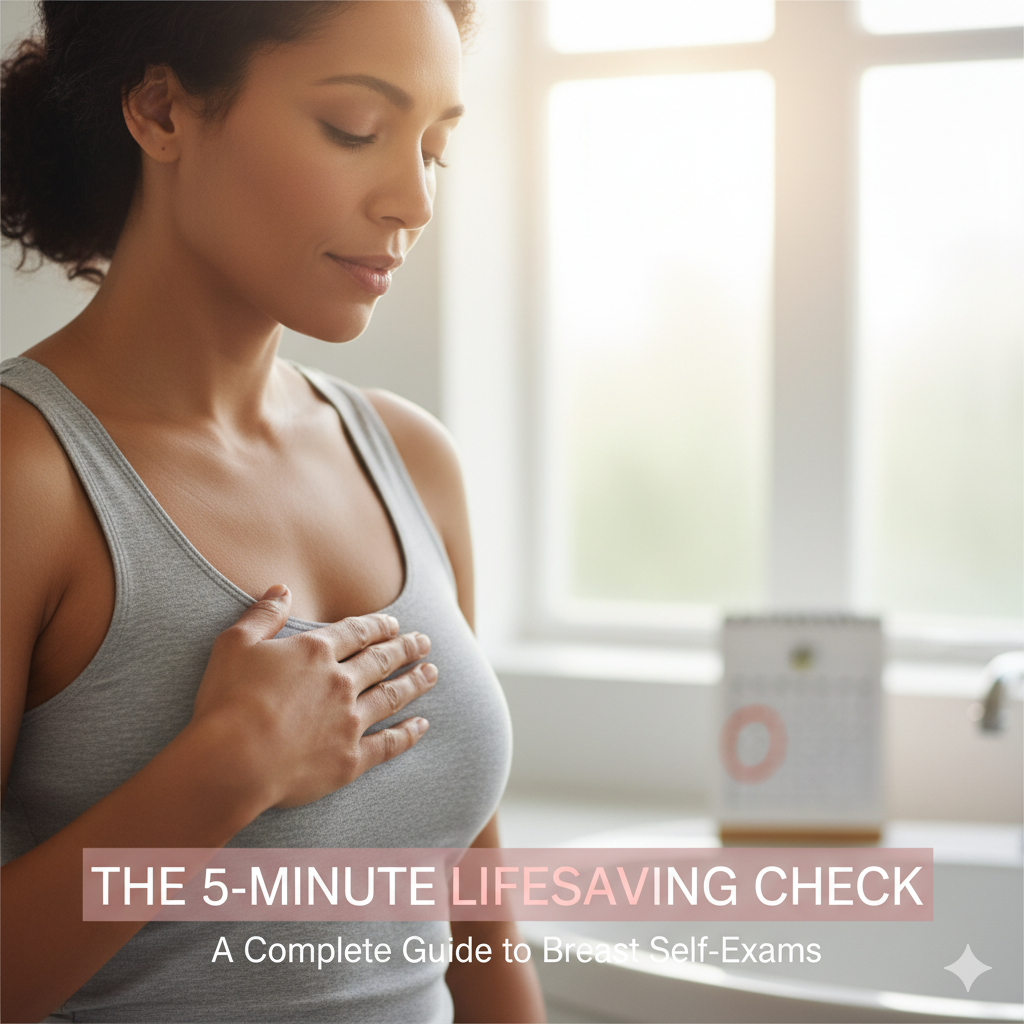The conversation around breast health often focuses on mammograms, but one of the most powerful and accessible tools for early detection is the Breast Self-Exam (BSE). It’s a quick, easy, and vital check you can do at home to become familiar with the normal look and feel of your breasts.
The goal isn’t to diagnose yourself—it’s to know your body so well that you can immediately spot a change and bring it to your doctor’s attention.
🗓️ When to Perform Your Self-Exam
The best time to perform a self-exam is about 3 to 5 days after the start of your period. During this window, your breasts are typically the least tender and least lumpy.
If you no longer have periods, simply choose a memorable day of the month—like the first or the last day—and stick to that schedule. Consistency is key!
Steps to a Complete 5-Minute Check
A proper Breast Self-Exam is done in three main positions: In the Shower, In Front of a Mirror, and Lying Down.
1. In the Shower (The Feel Check)
The wet, slippery skin helps your fingers glide easily, making it simpler to feel for lumps or changes.
- Use the pads of your middle three fingers (the most sensitive part).
- Use light, medium, and firm pressure to check all breast tissue layers.
- Move your fingers in a systematic pattern—either in an up-and-down motion (like mowing a lawn) or in a circular pattern, starting from the outer edge and moving toward the nipple.
- Check the area from your collarbone down to below your rib cage and from your armpit to your breastbone.
2. In Front of a Mirror (The Look Check)
Stand with your arms at your sides, and carefully observe your breasts for any visual changes.
- Arms at Sides: Look for any changes in breast shape, size, or color. Note any visible dimpling, swelling, or distortion of the nipple.
- Arms Raised Overhead: Lift your arms high and look for the same changes, paying close attention to any puckering or dimpling of the skin.
- Hands on Hips (and Leaning Forward): Pressing your hands firmly into your hips flexes the chest muscles, making any dimpling or changes easier to see.
3. Lying Down (The Deep Feel Check)
When you lie down, your breast tissue spreads out evenly, making it thinner and easier to examine.
- Lie on your back and place a pillow under your right shoulder.
- Place your right arm behind your head—this helps spread the tissue.
- Use the pads of your left hand to examine your right breast, repeating the systematic pressure and pattern (circles or vertical lines) you used in the shower.
- Repeat the process for your left breast, placing the pillow under your left shoulder and your left arm behind your head.
What Am I Looking For? The Red Flags
The purpose of this check is to identify anything that is new, different, or unusual for you. While most breast changes are benign, you should see a doctor if you find any of the following:
- A new lump or thickening in the breast or armpit.
- A change in the size or shape of the breast.
- Dimpling or puckering of the skin (sometimes described as an orange peel texture).
- A nipple that is inverted (turned inward) when it was previously outward-facing.
- Redness, swelling, or scaly skin on the breast or nipple.
- Any bloody or clear discharge from the nipple.
Remember: If you find something, don’t panic. Many women have naturally lumpy breasts, and most lumps are not cancer. However, only a medical professional can make that determination. The 5-minute check is your first line of defense; use it to empower yourself and ensure you seek care promptly.

